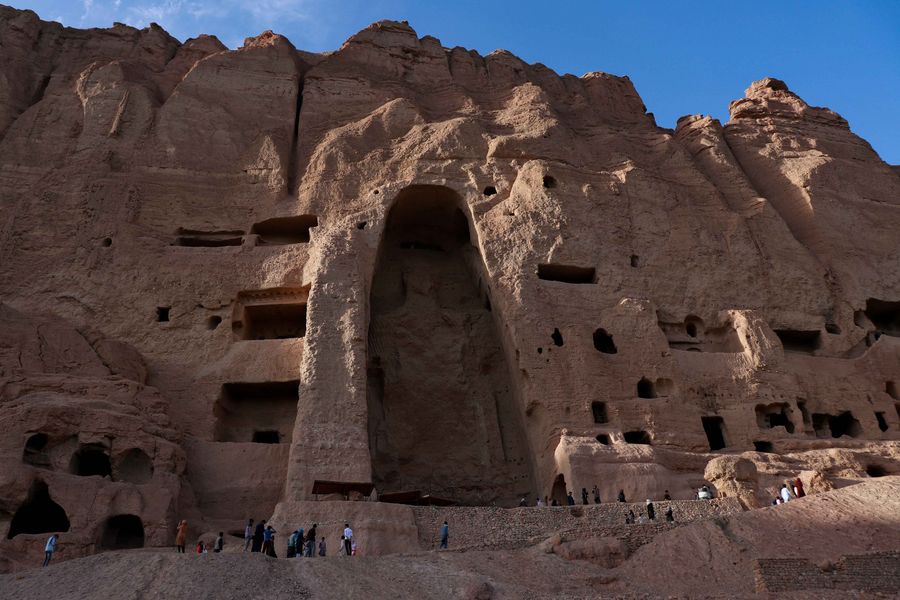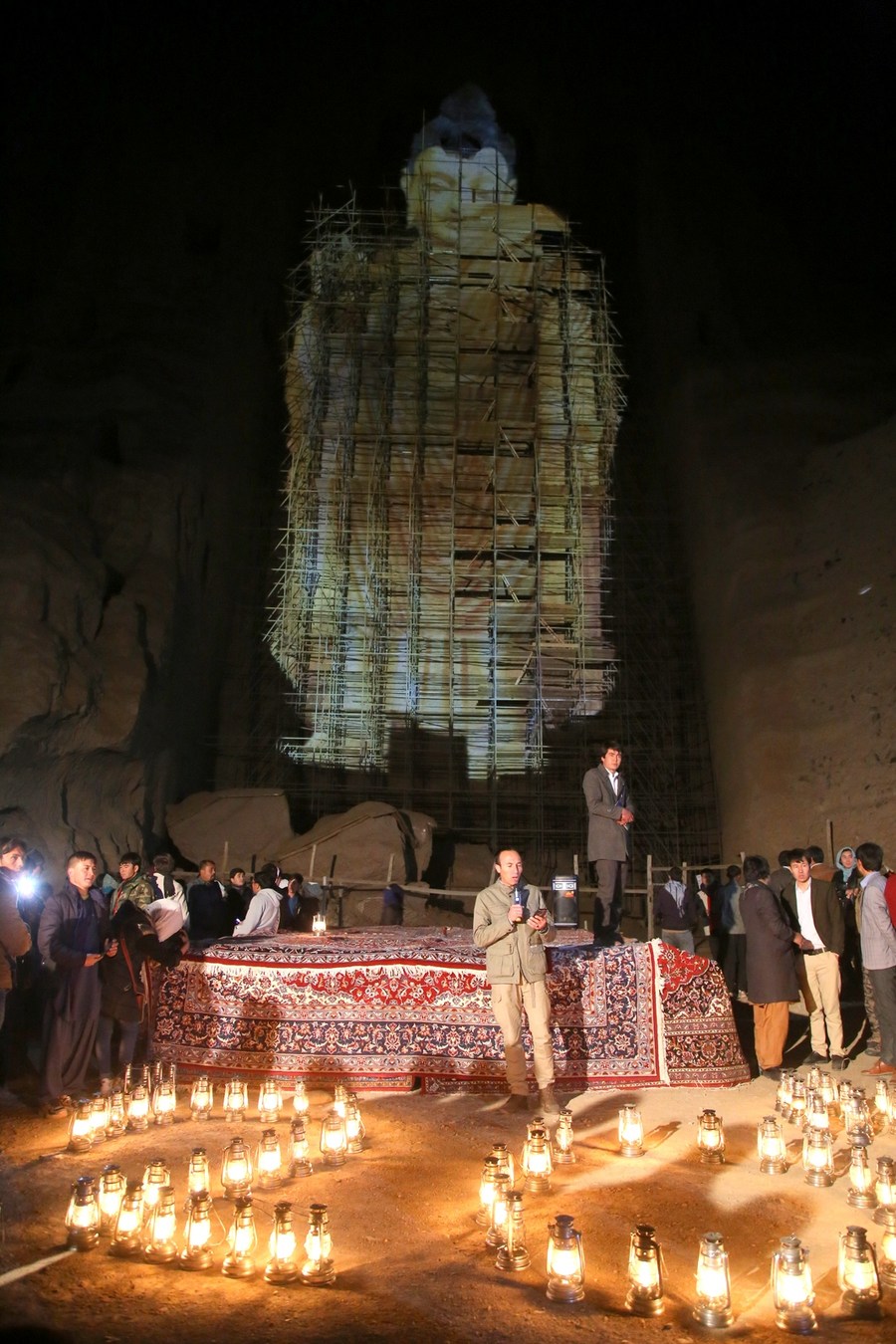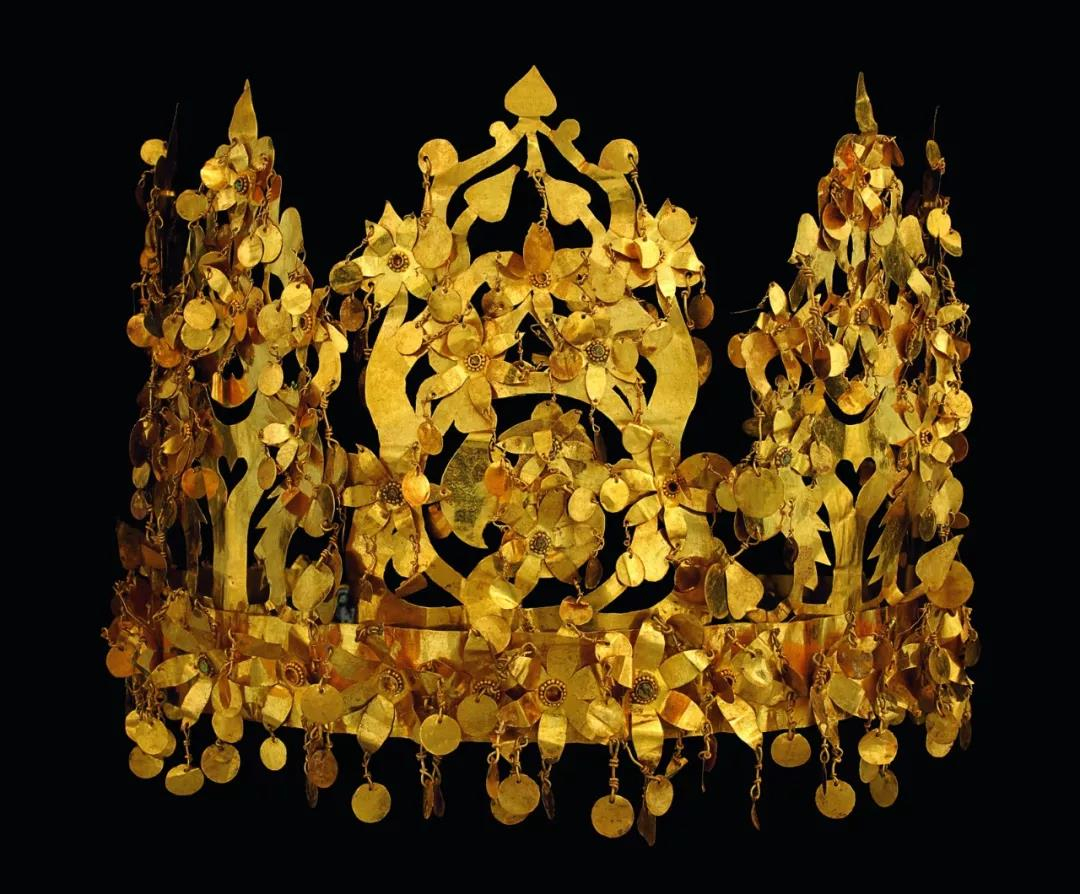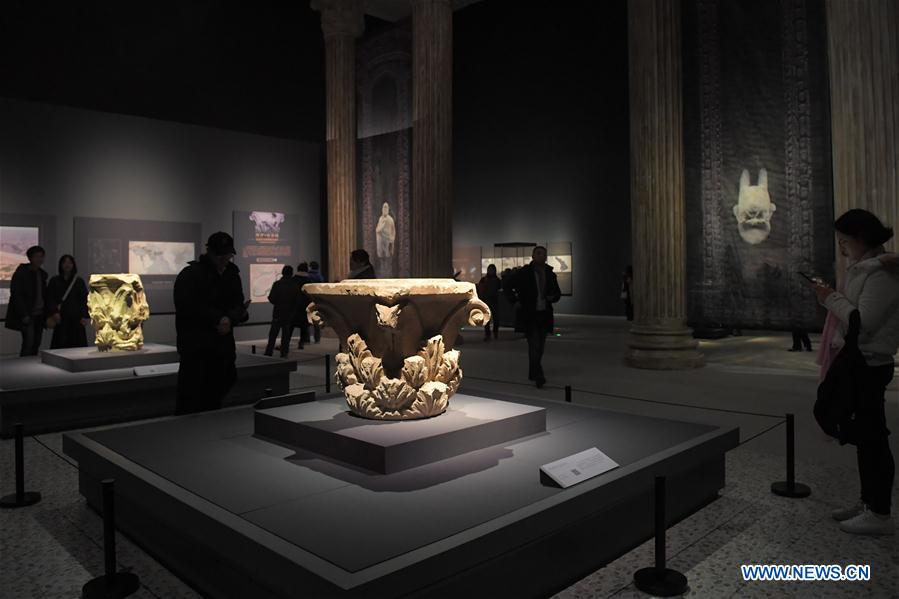"A nation stays alive when its culture stays alive," reads a sign at the entrance of the National Museum of Afghanistan in Kabul.
As an important node on the Silk Road, Afghanistan boasts a syncretic culture. Tragically, the protracted war and civil conflicts in the past decades have wreaked havoc on its cultural heritage.
The Bamiyan Buddhas
In March 2001, two of the world's largest standing Buddha sculptures in the country, known as the Buddhas of Bamiyan, were blown up by Taliban.
At an elevation of 2,500 meters, these two giant statues, 38 meters and 55 meters in height, respectively, were carved into the side of a cliff in the Bamiyan Valley.

People visit the ruined Bamiyan Buddhas in Afghanistan, August 16, 2019. /Xinhua
People visit the ruined Bamiyan Buddhas in Afghanistan, August 16, 2019. /Xinhua
The annihilation of the 1,500-year-old sandstone carvings has been condemned globally and has drawn worldwide attention to preservation of cultural heritage in the country.
Since its inscription on the World Heritage List by UNESCO in 2003, it has received over $27 million from international communities to protect and revitalize the region's cultural sector, according to the organization.
In 2015, Zhang Xinyu and Liang Hong from China filled the empty niche of the 55-meter Buddha with the help of 3D laser light technology. The couple then donated the $100,000-worth projection equipment to the local government for future use.

An event marking the 20th anniversary of the destruction of the Bamiyan Buddhas is held in Afghanistan, March 9, 2021. /Xinhua
An event marking the 20th anniversary of the destruction of the Bamiyan Buddhas is held in Afghanistan, March 9, 2021. /Xinhua
National Museum of Afghanistan
The National Museum of Afghanistan, founded in 1931 in Kabul, houses a rich collection of artifacts from prehistoric relics to Islamic art that reflect the country's cultural diversity and antiquity.
During the post-Soviet civil war (1989-1996), some 140,000 items in the museum were looted or ruined, accounting for 70 percent of its total holdings. And subsequently, a large number of collections were looted and vandalized by Taliban.
The ongoing turbulent situation in the country has posed a great challenge to the protection of cultural relics. From 2016, the museum's treasures started being relocated and were exhibited in countries such as France, Italy, the Netherlands, the U.S., Australia and Japan.
Between 2017 and 2019, China joined the relay in helping safeguard the treasures. Museums in different cities across China displayed the ancient cultural artifacts from the war-ravaged country.

A gold crown on display at an exhibition featuring national treasures from Afghanistan in Beijing, April 2019. /Tsinghua University Art Museum
A gold crown on display at an exhibition featuring national treasures from Afghanistan in Beijing, April 2019. /Tsinghua University Art Museum

Visitors view exhibits at an exhibition of cultural relics from the National Museum of Afghanistan at the Hunan Museum in Changsha, central China's Hunan Province, December 29, 2018. /Xinhua
Visitors view exhibits at an exhibition of cultural relics from the National Museum of Afghanistan at the Hunan Museum in Changsha, central China's Hunan Province, December 29, 2018. /Xinhua
Meanwhile, heritage professionals have been working together with the Afghan government to protect the existing cultural heritage sites, according to UNESCO. Yet, the Afghan heritage remains highly fragile.
Read more:
Graphics: What you should know about U.S. troop withdrawals from Afghanistan
China inks bilateral cooperation agreements on heritage conservation with Afghanistan, Pakistan
(Cover image via CFP)

